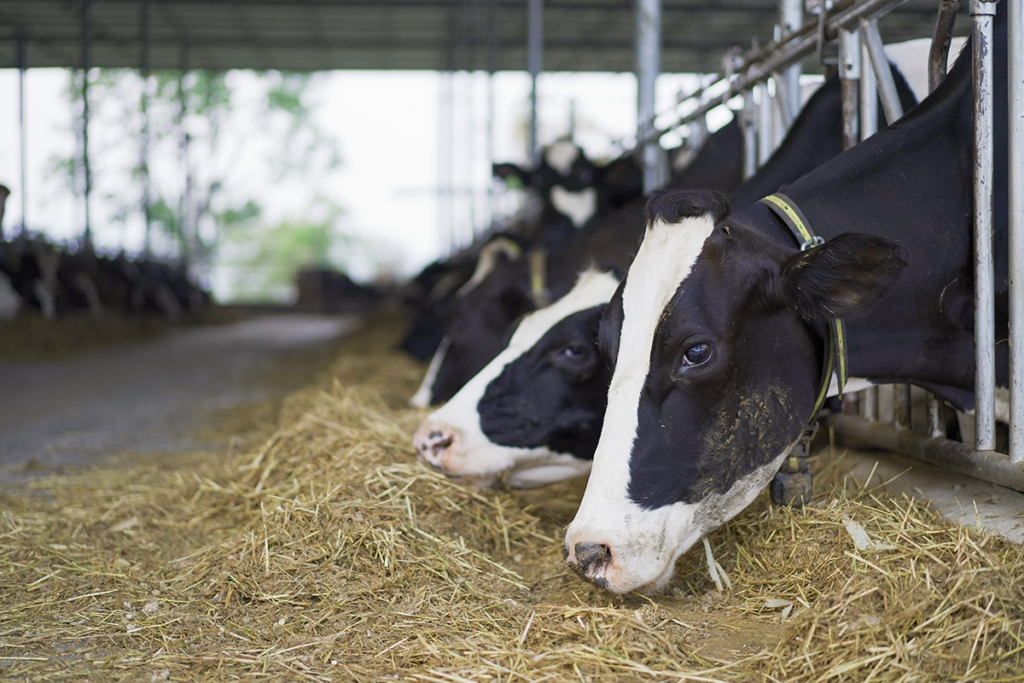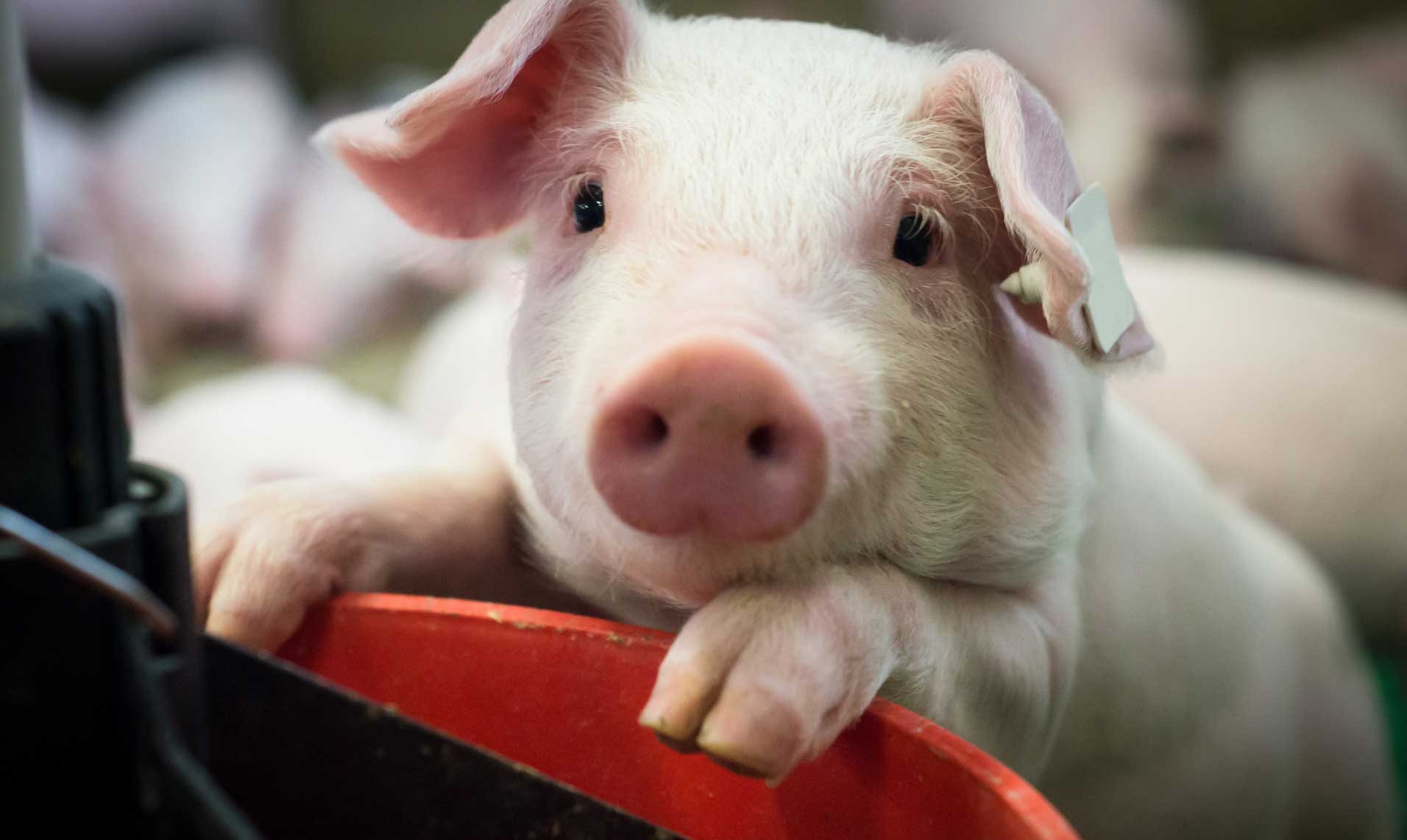Research Roundup NC State Veterinary Medicine, September 2024
Cutting-edge research at the NC State College of Veterinary Medicine is valued by all members of our community, from faculty and staff to students and trainees. Here are some of the latest innovative studies authored by graduate students, postdocs, residents and clinical veterinarians across our campus!

Studying Pigs as a Research Model to Improve Hearing Loss Treatment
Moatti A, Connard S, De Britto N, Dunn WA, Rastogi S, Rai M, Schnabel LV, Ligler FS, Hutson KA, Fitzpatrick DC, Salt A, Zdanski CJ, Greenbaum A.
Hearing loss affects millions of people worldwide. Current treatments such as Cochlear implants benefit many patients, but researchers want to go further and pioneer new pharmaceutical therapies to prevent and treat hearing loss. Unfortunately, one challenge is that studying drug delivery and distribution in the inner ear is difficult because there is currently no way to sample inner ear fluids without invasive surgery. An animal model is crucial to better understand inner ear pharmacokinetics, or the study of drug absorption, distribution, metabolism and excretion. Rodent models and even nonhuman primates are not good candidates because the anatomy and size of their inner ear do not match that of humans. As a result, researchers from the NC State College of Veterinary Medicine conducted a study to find a reliable animal model for inner-ear drug delivery. The study, with postdoc Adele Moatti as the first author, looked at a pig model due to the similarities of the inner-ear anatomy. The researchers found that after injection, the diffusion time and drug concentrations in the pig model closely align with the limited data available from human studies. These exciting results demonstrate that pigs could be an ideal large animal model for studying inner-ear pharmacokinetics and could improve the possibility of expanding our current treatments for hearing loss.
The study and its results can be found in Frontiers in Pharmacology here.
Analyzing Health-Related Quality of Life in Senior and Geriatric Dogs.
Mondino A, Yang CC, Simon KE, Fefer G, Robertson J, Gruen ME, Olby NJ.
Advancements in veterinary medicine and a focus on preventive care have significantly increased the lifespan of dogs. As they age, though, dogs face significant health challenges, such as degenerative diseases and sensory impairments that impact their quality of life. As our dogs live longer, it’s important that clinician-researchers study the best methods for geriatric care. Health-related quality-of-life research in older dogs is limited, with a lack of information on how quality of life changes over time and its connection to mortality in older dogs. Research from the NC State College of Veterinary Medicine, led by neurology intern Alejandra Mondino, aimed to not only further study the health-related quality of life in senior dogs but also analyze the progression of quality of life by using questionnaires and statistical models. The results showed that when owners are asked about their dogs’ overall quality of life, they tend to base their response on aspects like their dogs’ vitality and mobility. The results also showed that a decline in health-related quality of life was associated with an increased risk of mortality, emphasizing the importance of regularly assessing aging dogs for their health-related quality of life.
The study and its results were published in Plos One and can be read here.

Using Comparative Research to Improve the Outcome of Equine Patients with Sepsis
Hobbs KJ, Le Sueur ANV, Hallowell K, Martin E, Sheats MK, Ueda Y.
Sepsis is an exaggerated systemic inflammatory response to infection and unfortunately is common in horses. Despite substantial advances in medical management, sepsis continues to be a leading cause of illness and death in these patients. In humans with sepsis, the use of hemoperfusion – blood filtration through a column – is improving outcomes. Ongoing research at the NC State College of Veterinary Medicine has proven that hemoperfusion in the horse is safe and able to remove cytokines, which promote systemic inflammation. Recently, researchers from the Equine Innovations Lab and Extracorporeal Therapy Service at the NC State Veterinary Hospital were able to perform hemoperfusion on a horse suffering from sepsis. The results of the study, authored by graduate student Kallie Hobbs, demonstrated that the patient did clinically improve over the course of treatment, showing a lot of promise for this novel treatment.
The full study and its results were published in the Journal of Veterinary Internal Medicine and can be found here.
Evaluating A Novel Technique to Treat Mastitis in Dairy Cows
Mzyk DA, Halleran JL, Sylvester HJ, Giles CB, Jacob ME, Baynes RE, Foster DM.
In dairy cattle, mastitis is one of the leading causes of economic loss. Bacterial infections are the main cause of mastitis, and antimicrobials are typically used to treat the infection. When using any antimicrobial, the goal is to reach a high enough antimicrobial concentration at the target site, in this case the mammary gland, to be effective against bacteria. However, it is not fully understood whether the presence of bacterial mastitis alters how the antimicrobial works in the mammary gland. This study, from our Department of Population Health and Pathobiology, used a novel sampling collection technique with a tool called an ultrafiltration probe, which gives a very accurate reading of antimicrobial concentrations. Researchers used the ultrafiltration probe in a mammary gland that had mastitis and in a healthy mammary gland. The dairy cattle were treated with an intramammary antimicrobial called ceftiofur hydrochloride in both the mastitic and healthy glands to observe how disease affects the drug concentration and pharmacokinetics of the drug. Ultimately, in this study, the antimicrobial concentration samples did not differ between the mastitis and healthy samples. However, the results did demonstrate that the novel sampling technique was successful, allowing for sample collection with no adverse effects in the adult dairy cows.
The full study and its results were published in the Journal of Veterinary Internal Medicine and can be found here.

Research Connection: The Role of Department Leadership in Uplifting Research with Dr. Kaori Sakamoto
We caught up with Dr. Kaori Sakamoto, an NC State CVM alumna from the Class of 1999 who was welcomed back in July as the new Department Head of Population Health and Pathobiology. She spent the first 15 years of her career at the University of Georgia, where she served as director of the college-wide graduate program in comparative biomedical sciences, as well as interim department head of pathology. Her research background is in tuberculosis immunology, particularly at the level of the mycobacterial-macrophage interaction. Dr. Sakamoto is passionate about developing people and programs, with particular emphasis and expertise in mentoring, communication, professional development and well-being.
Clinical Trial of the Month
NC State College of Veterinary Medicine is recruiting cats with oral squamous cell carcinoma for a new clinical trial! All cats will be treated with standard radiation therapy. Some cats will also receive a novel radiation-enhancing drug. See if your cat is eligible.
- Categories:


